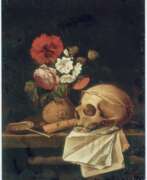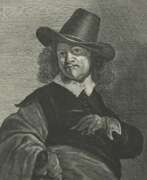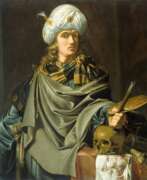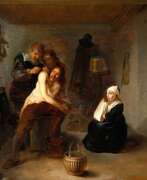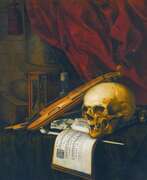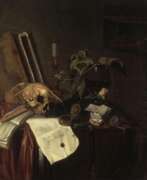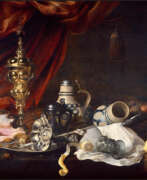Vanitas 17th century


Ambrosius Bosschaert the Elder, born on January 18, 1573, in Antwerp and passing away in 1621 in The Hague, was a pivotal figure in the Dutch Golden Age of painting. Recognized for his remarkable contributions to the art of still life painting, particularly floral arrangements, Bosschaert founded a dynasty of painters who furthered his intricate style of floral and fruit painting. This legacy cemented Middelburg's status as a premier center for flower painting in the Dutch Republic.
Fleeing to the Northern Netherlands due to religious persecution, Bosschaert and his family settled in Middelburg around 1587, where he would spend the majority of his career. His paintings, known for their precision and vibrant composition, reflect the era's fascination with botany, merging scientific accuracy with artistic beauty. Bosschaert's work was not only celebrated for its aesthetic appeal but also for its symbolic and sometimes religious meanings, often painted on small copper canvases that highlighted the meticulous detail of each flower.
His influence and techniques were continued by his three sons and his brother-in-law, Balthasar van der Ast, ensuring the Bosschaert style flourished through the mid-17th century. Bosschaert's approach to flower painting laid the groundwork for what would become a defining genre in Dutch art, showcasing not just the beauty of nature but the wealth and intellectual curiosity of the era.
For collectors and experts in art and antiques, Ambrosius Bosschaert the Elder's contributions to still life and flower painting remain invaluable. His legacy is preserved in the meticulous bouquets that capture the transient beauty of flora, making his works sought after for both their historical significance and timeless appeal.
To stay informed about new discoveries, sales, and auction events related to Ambrosius Bosschaert the Elder, signing up for updates from art galleries and auction houses is recommended. This ensures access to the latest information and opportunities to acquire works by this master of still life painting.


Alexander Coosemans was a Flemish painter of the Baroque period.
Coosemans studied under the masters of still life painting and became a member of the Guild of St. Luke of Antwerp in 1645.
Coosemans painted lush, fruit- and flower-rich still lifes, vanitas-style still lifes that evoke the transience of life. His compositions are often thought to have hidden, allegorical meanings: lobsters, wine and lemons - each subject is filled with references to biblical themes and history.
In collaboration with other artists, Coosemans created so-called garland paintings - a portrait or religious subject surrounded by garlands of flowers and fruit. The artist also decorated the villas of the nobility of Genoa and Rome with his works.
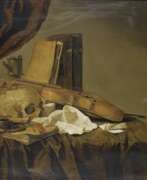

Jacques Adolphsz. de Claeuw or Jacques (de) Grief was a Dutch painter-painter of the Golden Age, a member of the Dordrecht and the Hague Guild of St. Luke. He is known chiefly for his still-life paintings, particularly in the heat of vanitas. His son is the painter Adriaen de Grijef.


Antonio de Pereda y Salgado was a Spanish Baroque painter and a recognized master of the vanitas genre.
He was born into a creative family: his father and mother were painters, his two younger brothers also became painters.
Antonio de Pereda's work is characterized by a meticulous painting of the smallest details, he gives particular importance to light. The subjects of religious paintings and the construction of the composition meet all the standards of spiritual art adopted in the 17th century. De Pereda also painted still lifes vanitas and allegories.
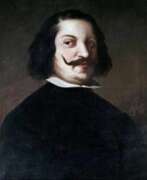

Juan de Valdés Leal, born on May 4, 1622, in Seville, Spain, and passing away on October 15, 1690, was a Spanish painter and etcher celebrated for his Baroque era works. Valdés Leal is recognized for his dramatic and often somber thematic paintings which starkly contrasted with the serene styles of his contemporaries. His notable contributions include not just painting but also sculpture and architecture, indicating his versatile artistic talents. Educated under Antonio del Castillo in Córdoba, Valdés Leal's body of work covers religious and vanitas themes, emphasizing the transient nature of earthly life and the inevitability of death.
One of Valdés Leal's significant periods was after his return to Seville in 1656, where alongside Bartolomé Esteban Murillo, he co-founded the Seville Academy of Art. This period marked the creation of some of his most poignant works, including "In ictu oculi" and "Finis gloriae mundi," which he painted for the Charity Hospital in Seville. These works are revered for their deep contemplation on mortality and the fleeting nature of worldly success.
Valdés Leal's legacy extends beyond his own lifetime, with several of his children, including Lucas, Juan, Maria, and Laura, following in his artistic footsteps. His influence persisted in Seville's artistic landscape, especially in religious art, where his pieces continued to inspire both awe and reflection.
For collectors and experts in art and antiques, Juan de Valdés Leal's work offers a profound glimpse into the Baroque era's complex interplay of beauty, spirituality, and the macabre. His paintings, many of which reside in museums and private collections worldwide, remain a testament to his skill and depth as an artist.
To stay updated on sales and auction events related to Juan de Valdés Leal's works, signing up for updates can provide exclusive access to the latest available pieces and related events, ensuring enthusiasts and collectors don't miss out on acquiring or viewing works by this illustrious artist.
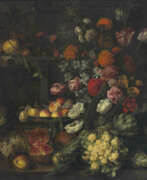

Guiliam Gabron, or Willem Gabron, was a Flemish Baroque still life painter, who worked in a wide range of genres including fruit pieces, vanitas still lifes, flower still lifes, game pieces and breakfast pieces. Gabron was also a gifted animalier and often included living animals in his still life scenes. He initially worked in a monochrome style but developed a more colourful palette after a long stay in Italy.
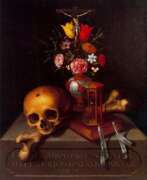

Tomas Hiepes was a distinguished Spanish painter from the Kingdom of Valencia, celebrated for his contribution to the Baroque movement. Hiepes specialized in still life and bodegón, a genre depicting pantry items, creating artworks that resonated both with private clients and public events. His career, particularly active from the second decade of the 17th century until his death, marks a significant period in art history, with most of his recognized works produced after 1642.
Hiepes' artistic mastery is evident in his depictions of everyday objects, fruits, particularly grapes, and flower vases, which became iconic in the Valencia region during the 17th and 18th centuries. His unique style of flower painting, focusing on the natural beauty and intricate details of his subjects, positioned him as a pivotal figure in art history. Museo del Prado hosts the most extensive collection of his works, highlighting his significance in the realm of Baroque art.
His works, such as "Still Life of Grapes" (1649) and "Still Life with Grapes" (1655), exemplify his skill in blending realism with the artistic flair typical of the Baroque period. These paintings not only showcase his ability to render subjects with stunning accuracy but also reflect his thematic versatility, ranging from religious motifs to allegorical representations.
For collectors and experts in art and antiques, Tomas Hiepes offers a fascinating insight into Spanish Baroque still life painting, with his works serving as a testament to the rich cultural and artistic heritage of the period. His legacy continues to inspire and captivate audiences, affirming his place among the celebrated artists of his time.
To stay informed about new discoveries, sales, and auction events related to Tomas Hiepes, consider signing up for updates from art galleries and auction houses. This subscription ensures access to the latest information and opportunities to engage with the works of this remarkable Baroque painter.
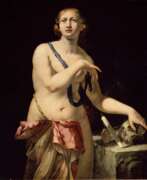

Pietro Negri was an Italian painter who belonged to the Baroque "tenebrosi" movement.
Many of Negri's paintings have a somber character and convey a general mood of drama, which is emphasized by contrasting effects of light and shadow. This style is characteristic of Caravaggio and his followers. Negri painted allegories in the style of vanitas, scenes on mythological and religious themes, as well as domestic genre scenes.
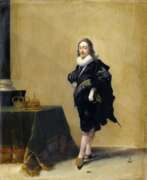

Hendrik Gerritsz. Pot, nicknamed Pot from the East Indies, was a Dutch painter-painter, miniaturist, and decorator. He was a member of the Guild of St. Luke of Haarlem. Poth's famous works include genre paintings, portraits, and still lifes in the vanitas style. Sweat has genre scenes depicting groups of young people leading merry lives, drinking, eating and flirting, but he also painted a series of portraits of the English royal family.
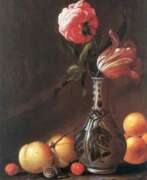

Evert van Aelst was a Dutch painter of the Dutch Golden Age and a member of the Delft Guild of St. Luke. He was the uncle and teacher of the now most famous painter Willem van Aelst. Evert van Aelst was a skilled painter of all kinds of still life and depicted flowers, fruit, armor, metalwork, hunting trophies and equipment.
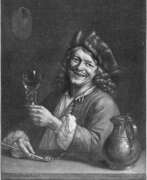

Pieter Gerritsz. van Roestraeten was a Dutch painter who spent most of his life in Great Britain.
He lived in Amsterdam, and in 1666 moved to London, where he remained for the rest of his life, enjoying the highest patronage.
Roestraeten painted mainly still lifes with luxury goods, as well as still lifes in the vanitas style. He created at least four self-portraits, and often painted his own reflections on polished silver objects in still lifes. The artist also depicted genre scenes from the everyday life of the common people.


Pieter Gerritz van Roestraten was a Dutch painter who painted floral still lifes and vanitas, genre scenes and portraits. Starting his career in Haarlem, he spent most of his time in London, where he enjoyed the patronage of the highest circles.


Adriaen van Utrecht was a Flemish painter known mainly for his sumptuous banquet still lifes, game and fruit still lifes, fruit garlands, market and kitchen scenes and depictions of live poultry in farmyards. His paintings, especially the hunting and game pieces, show the influence of Frans Snyders. The two artists are considered the main inventors of the genre of the pronkstillevens, i.e. still lifes that emphasized abundance by depicting a diversity of objects, fruits, flowers and dead game, often together with living people and animals. Van Utrecht also painted a number of flower still lifes. He was a regular collaborator with leading Antwerp painters who had been pupils or assistants of Peter Paul Rubens, such as Jacob Jordaens, David Teniers the Younger, Erasmus Quellinus II, Gerard Seghers, Theodoor Rombouts, Abraham van Diepenbeeck and Thomas Willeboirts Bosschaert.
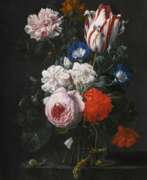

Nicolaes van Verendael or Nicolaes van Veerendael was a Flemish painter active in Antwerp who is mainly known for his flower paintings and vanitas still lifes. He was a frequent collaborator of other Antwerp artists to whose compositions he added the still life elements. He also painted a number of singeries, i.e, scenes with monkeys dressed and acting as humans.
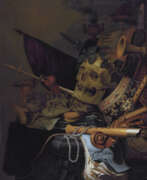

Johannes van der Molen or Johannes Jan Vermeulen was a still-life painter during the Dutch Golden Age. He was active in Haarlem from 1638 to 1674. His specialty was the Vanitas, a style of painting meant to symbolize the transience of life. Many of them feature books.
Some of his works may be seen at the Statens Museum for Kunst, Mauritshuis, Schloss Johannisburg and the Musée des beaux-arts de Nantes. Others are in private collections.
